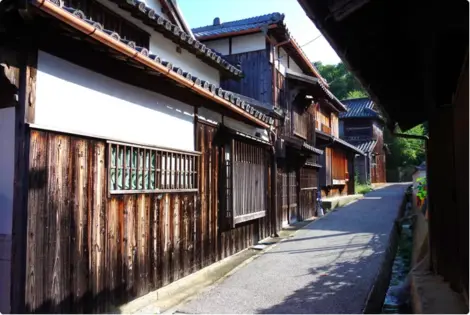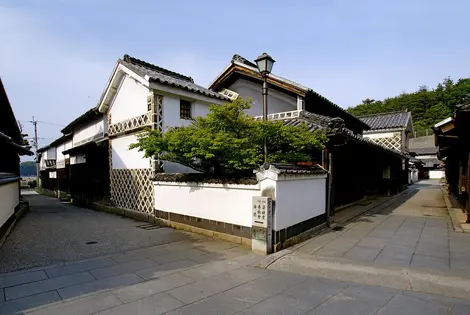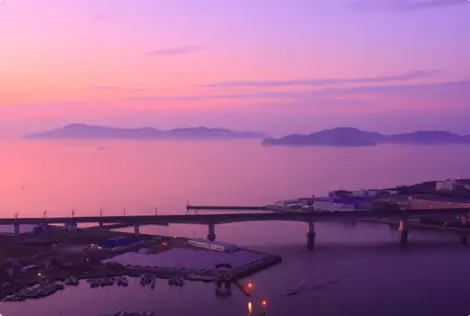Honjima Island 本島
- Published on : 16/05/2019
- by : J.R.
- Youtube
Sailors' Island in the Seto Sea
Honjima is one of the largest islands in the Shiwaku archipelago, and also one of the most popular. This history-rich island participates in the Setouchi Triennale, the contemporary art festival held in the Seto Inland Sea .
A little history
Honjima Island is part of the Shiwaku Archipelago, made up of 28 islands in the Seto Inland Sea. It depends on the Kagawa prefecture and extends over 6.74 km2.
Over the centuries, the Shiwaku Islands have played a vital role in the shipping of the Seto Inland Sea. For the most part, Honjima was the center of power and governance on the islands, and several interesting historical sites have been preserved, including entire districts bearing witness to the Edo period (1603 - 1868).
- Read also: The sea in Japan and Myths of the islands of the Seto Sea
During its heyday around the 15th century, Honjima Island served as the base for the Shiwaku Navy, an organization of the most reputable and experienced sailors in Japan, who controlled the Shiwaku Islands. They were often hired by daimyos, feudal lords, to help them during their territorial expansion campaigns.
In addition to its rich history, the island is worth visiting for its beautiful villages, especially Kasashima in the northeast of the island, a port made up almost entirely of preserved historic buildings. This port city was an important trade and shipbuilding center during the Edo period. About twenty wooden houses have been preserved and are visible while walking through the narrow streets of the city. Most are private residences, although three of them are open to the public. On the heights of the city are also the ruins of Kasashima Castle.
Some pictures of Honjima Island:
Works from the Setouchi Triennial on Honjima
About 15 works of art will be exhibited outdoors on the island. Some of them date from previous triennials and have been left in place.
The works will be installed in two places: in Kasashima, but also Tomari, the main port.
Visitors and contemporary art lovers will be able to admire installations by Akira Ishii, Yasuaki Igarashi, Kazuko Murao, Rikuji Makabe, and many other Japanese artists.
Works not to be missed:
The "Kanrin House", by Rikuji Makabe , in the village of Tomari . You will be able to enter the house of this former sailor of the island, entirely transformed into a work of art. The walls are covered with shohekiga paintings representing the landscapes of the island, around an interior basin.
Also in the village of Tomari, do not miss the shop signs painted by Kazuko Murao, illustrating popular myths and legends.
Directly installed on the port, the sculpture "Departure" by Akira Ishii represents the Kanrin Maru ship in iron.
"From Birthing Hut to Mourning Rites" is an outdoor work by Hiroshi Furugori. It reproduces the system of double ryobosei tombs, one is intended to accommodate the body of the deceased and the other for visits by relatives.
For further :
- The Seto Inland Sea
- How to get around during the Setouchi Triennale?
- The Shimanami Kaido Cycle Path
- Teshima Island
- Honjima Island
- Ibukijima Island
- Awashima Island
- Shamijima Island
- Takamijima Island
- Ogijima Island
- Megijima Island
- Takamatsu City
- Uno Harbor
- Kosan-ji Temple
- The Myths of the Seto Inland Sea Islands
- Battles and legends in the Seto Inland Sea
- Pirates and Fighters of the Seto Inland Sea
- Youkai of the Seto Inland Sea
- Naoshima's open-air works of art
Address, timetable & access
Address
Timetable
Ferry from Marugame on Shikoku, between 20 and 35 min journey, 550 yen one way ($6.50/6€). Ferry from Kojima on Honshu, 30 min journey, 640 yen one way ($7.25/6.75€). Setouchi, from September 28 to November 4, the ferry departs from Takamijima every 1 to 2 hrs. 25 min journey for 1,000 yen one way ($11.25/10.50€).





















